
All categories
Featured selections
Trade Assurance
Buyer Central
Help Center
Get the app
Become a supplier

(87 products available)
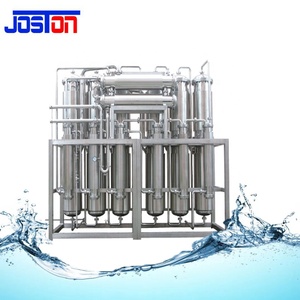


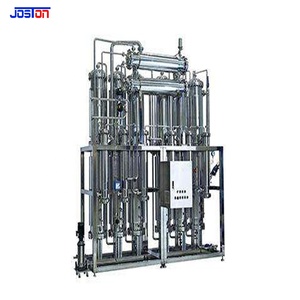


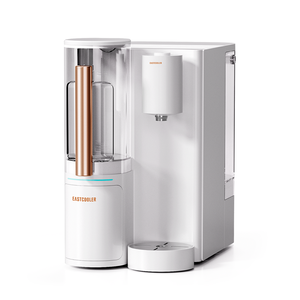

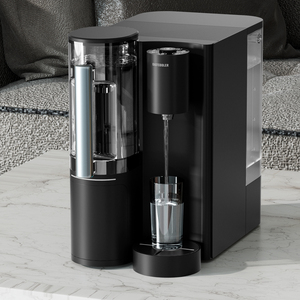






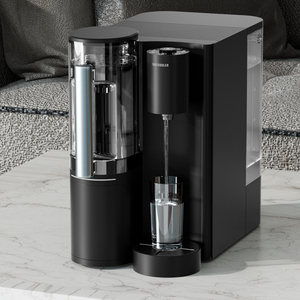
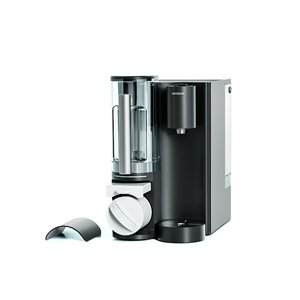
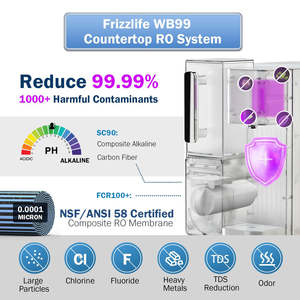




WFI (Water for Injection) is manufactured according to the standard of the USP and the EU Pharmacopeia, which is the water that meets the high purity requirements. It is produced by distillation, reverse osmosis (RO), or distillation that is coupled with other suitable purification processes. There are four main methods used to produce WFI water for injection:
Distillation is a method of producing water for injection by heating the feed water to produce steam and then condensing it. This process effectively removes impurities, including organic compounds, inorganic minerals, and bacteria. Water distillation for injection is usually carried out in a still or multiple-effect distillation (MED) system. The stills heat the water, producing steam that is then separated and collected as WFI.
Reverse osmosis is a membrane filtration process that uses a partially permeable membrane to remove ions, molecules, and larger particles from water. It is the most widely used method in pharmaceutical water systems. Reverse osmosis for water injection works by applying pressure to the feed water, forcing it through a semipermeable membrane to separate out impurities and contaminants, leaving pure water. RO systems are often coupled with additional purification steps, such as ultrafiltration and electrodeionization, to achieve the stringent purity requirements of WFI.
Multiple-effect distillation is a variation of standard distillation that uses multiple stages to distill water and achieve higher levels of purity and efficiency. The feed water is heated in a series of interconnected chambers, with each chamber operating at a slightly lower pressure than the one before it. This setup allows the water to boil at progressively lower temperatures as it moves through the system, producing multiple effects of distillation. In each effect, water vapor is generated, purified, and condensed, which increases the overall efficiency of the distillation process.
Electrodeionization is an advanced water purification technology that combines ion exchange and electricity to remove ions and impurities from water. It is often used as a polishing step in pharmaceutical water systems to further enhance the purity of the water. In an EDI system, the feed water passes through a series of ion exchange resins and membranes, while an electric field helps to attract and remove ions from the water. This process results in exceptionally high-quality deionized water that meets the stringent requirements of WFI.
Water for injection is a critical component in the production of pharmaceuticals and medical products. As such, the water must meet the high-quality standards established by the United States Pharmacopeia (USP) to ensure that it is both safe and pure. This includes the fact that water for injection must have an endotoxin level of no more than 0.25 EU/ml. In addition, there should be no more than 500 Colony Forming Units per milliliter (CFU/ml) present in water for injection.
Here are some of the key specifications of a WFI generator:
The production capacity and rate of a WFI generator refer to the maximum volume of water it can produce in a given time, typically expressed in liters per hour (L/h) or gallons per minute (GPM). The WFI generator's production capacity and rate should match the demands of the pharmaceutical manufacturing process.
As mentioned in the previous section, WFI water must meet stringent purity and microbial quality standards. This includes low levels of impurities such as endotoxins, total organic carbon (TOC), and microbial contaminants.
A WFI generator should comply with relevant regulations and guidelines, such as those set by the United States Pharmacopeia (USP) and the European Pharmacopoeia. In addition to regulatory compliance, the generator should have appropriate certifications to demonstrate its quality and safety.
Regular maintenance is important to ensure the reliable operation and quality of WFI water. This includes monitoring and controlling the system to ensure that the water it produces meets the required quality standards. The maintenance of WFI water includes the following areas:
It is crucial to clean the WFI generator regularly to remove any deposits, biofilms, or contaminants that may accumulate and jeopardize water quality. Thorough cleaning of the entire system, including the purification components and distribution loops, is necessary.
Filters are a crucial component of a WFI water system, and they play a key role in removing impurities and contaminants. Filter replacement is essential to maintaining effective water purification. Regularly scheduled filter changes, as well as appropriate monitoring and testing of filter performance, are important.
Periodic sanitization of the WFI generator is crucial to preventing microbial growth and contamination. This may include sanitizing purification units, distribution loops, and storage tanks. The choice of sanitizing agents and procedures should be based on system requirements and guidelines.
Monitoring the performance of the WFI generator is also crucial. This includes the monitoring of key water quality parameters, system operating conditions, and alarms. Regular testing, calibration of monitoring instruments, and record-keeping are important to ensure the system is operating as it should.
Water for injections is a crucial part of the pharmaceutical industry. It is used for various medical purposes in hospitals, clinics, and laboratories. WFI is used for diluting drugs before they are administered to patients. Some medications are required to be diluted with sterile water to make them safe for use. WFI provides a safe and efficient option for diluting medications while maintaining their potency.
WFI is used in medical devices and procedures that require sterile water. For instance, water for injection is used for reconstituting powders for intravenous use. Many intravenous drugs are delivered through solutions prepared by mixing a powder or crystalline form with a liquid, usually sterile water for injection. The water is used to dissolve the medication before it is administered intravenously.
WFI is used for flushing and cleaning medical equipment. Some delicate medical devices, such as catheters, require flushing with sterile water to maintain their sterility and proper function. Water for injection is also used to clean surgical instruments to prevent contamination and ensure patient safety.
WFI is used in research and diagnostic laboratories. Researchers need to maintain high precision and accuracy when carrying out experiments. They use water for injection when preparing reagents, buffers, and solutions to ensure the accuracy and reliability of their results.
WFI is commonly used in the production of pharmaceuticals. It is used as a raw material, ingredient, or solvent in the manufacturing process of pharmaceutical products. For instance, water for injection is used in the production of intravenous drugs, antibiotics, and other medications that require a high level of purity.
Pharmaceutical companies use WFI to clean and sterilize equipment during the manufacturing process. The water is used to ensure the final product meets the required quality standards. Water for injection is a popular option for compounding pharmacies that prepare customized medications for patients. Compounding pharmacists use it to compound sterile preparations such as injections and intravenous admixtures. Water for injection is the preferred option for diluting concentrated medications due to its high purity and safety profile.
When choosing WFI water for injection systems, it is important to first determine the specific requirements of the pharmaceutical production process. This will involve considering factors such as the required WFI water quality, production capacity, and the intended use of the WFI water in the manufacturing process.
When considering capacity requirements, it is important to assess the volume of WFI water that will be needed to meet production demands. This will help to determine the appropriate size and output of the WFI water for injection system.
It is also important to consider the quality standards that must be met when producing WFI water for injection. This will help to determine the type of purification technology that will be used in the WFI water for injection system.
When choosing WFI water for injection systems, it is important to select equipment that complies with relevant regulations and standards. This will help to ensure the system is capable of producing WFI water that meets the required quality specifications and regulatory requirements.
When choosing a WFI water for injection system, it is important to carefully examine the supplier's credentials, including customer reviews, industry certifications, and compliance with relevant standards and regulations. This can help ensure that the chosen system is from a reputable and reliable supplier with a track record of quality and performance.
Q1: What is the difference between purified water and WFI?
A1: Purified water is treated to remove impurities and contaminants, while WFI goes a step further to eliminate microbial components, endotoxins, and non-condensable gases that can be present in purified water.
Q2: What is the best water for injection?
A2: WFI is the most commonly used type of purified water in the pharmaceutical industry. This water is required for injections and infusions, as it complies with the highest quality standards and is produced using methods that prevent contamination.
Q3: What is the difference between WFI and purified water?
A3: WFI contains fewer bacteria than purified water and meets the minimum requirement for water in the pharmaceutical industry. It is also free of endotoxins.